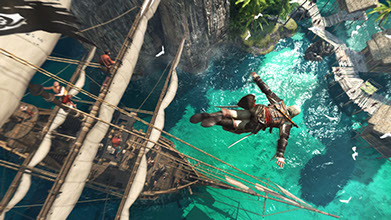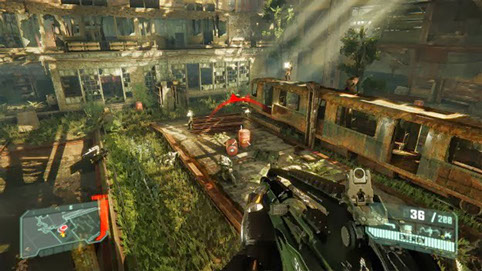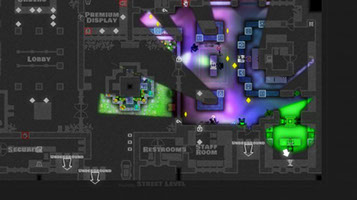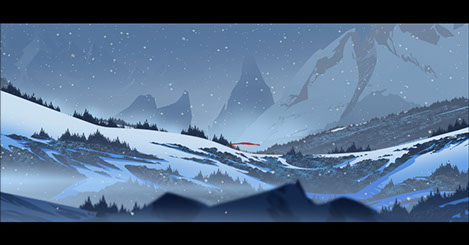




4 - 5
<
>
PHOTONe
GRAPHICS:
Yes, They Matter
 Every year, technology takes a leap forward, and we are living in a time when technology is arguably advancing at a faster rate than it ever has before. My desktop is just three years old, and yet when I look at new computers I feel like shipping it off to a museum. Mobile handsets from just 2 years ago feel today as if they have had their processors dipped in treacle, while my current phone runs like a jack-rabbit hopped up on red bull. Naturally, graphics in games have got progressively better as well, making similar advances. The Elder Scrolls V: Skyrim, a game from late 2011 had revolutionary graphics for its time. It looks amazing by today's standards, in fact. When compared to more recent titles, however, more flaws become visible. The world seems to lose some of its colour, and its hard to believe how much the standard has changed. Of course, this is all subjective; though newer games generally tend to look better, the hardware plays a major part in determining the visuals. More powerful hardware almost always leads to better graphics, and as we move forward technologically, we start to up the standards for how we expect our games to look.
Every year, technology takes a leap forward, and we are living in a time when technology is arguably advancing at a faster rate than it ever has before. My desktop is just three years old, and yet when I look at new computers I feel like shipping it off to a museum. Mobile handsets from just 2 years ago feel today as if they have had their processors dipped in treacle, while my current phone runs like a jack-rabbit hopped up on red bull. Naturally, graphics in games have got progressively better as well, making similar advances. The Elder Scrolls V: Skyrim, a game from late 2011 had revolutionary graphics for its time. It looks amazing by today's standards, in fact. When compared to more recent titles, however, more flaws become visible. The world seems to lose some of its colour, and its hard to believe how much the standard has changed. Of course, this is all subjective; though newer games generally tend to look better, the hardware plays a major part in determining the visuals. More powerful hardware almost always leads to better graphics, and as we move forward technologically, we start to up the standards for how we expect our games to look.
 But how important are graphics? In 2013, Crytek CEO Cevat Yerli famously stated that graphics can make up 60 percent of a game. Of course, most would consider this a biased point of view, and they are probably right considering Crysis 3 isn't exactly the worst looking game on the market. Despite what you might think, I agree, at least in some part. Graphics are incredibly important as they are necessary for communication between the game and the player. Most games can be played without audio, but not without visuals.
But how important are graphics? In 2013, Crytek CEO Cevat Yerli famously stated that graphics can make up 60 percent of a game. Of course, most would consider this a biased point of view, and they are probably right considering Crysis 3 isn't exactly the worst looking game on the market. Despite what you might think, I agree, at least in some part. Graphics are incredibly important as they are necessary for communication between the game and the player. Most games can be played without audio, but not without visuals.
I disagree, however that the graphical quality of a game is solely defined by the realism of the world depicted. We have been falsely goaded into thinking that a game with better 'graphics' is one running at a higher resolution, at a higher FPS with more anti aliasing. We think that more powerful hardware will lead to better graphics, marvelling at the power of our graphics cards, floored by how realistically they render grass flowing in the wind, water responding to player movement and even nosehairs reacting to the environment.(Okay, maybe not that last one)
I disagree with the notion that 'good' graphics solely revolve around photorealism. Graphics in a game exist solely to immerse the player in the experience. What so many people fail to realize is that graphics need not be photorealistic in order to be immersive. Indie games are a perfect example of this. Indie developers rarely have the luxury of the massive resources available to developers of big budget, triple A games. For this reason they are often forced to rely on creative and innovative visuals rather than monitor melting realism.
Of course, not all indie games forgo a high level of realism in favour of more unique visuals, but in my opinion, even though both philosophies of game graphical design can coexist, unique and immersive graphics should be given preference over photorealism every single time.
 On the other side of that coin, however, even triple A titles should accommodate both approaches. A recent example of a game that does just that is Assassin's Creed 4. The sole purpose of its visuals is not too convey a photorealistic world. The art direction exists solely to immerse the player and that shows in the gameplay. It's far from the most realistic game in the world, and is in many categories far outclassed by the latest entry in the Battlefield series, but for my money, the visuals captivate me in a way Battlefield 4 never could. I rarely play games for good graphics, but there are certain games whose art styles are so gripping that I can't help but appreciate them. The Banner Saga, a recent game with a beautifully hand drawn art style does a good job of teaching a lesson to triple A titles; your graphics don't need to represent reality as closely as possible, they need to represent the world of your game, because in the end, the game is all that truly matters.
On the other side of that coin, however, even triple A titles should accommodate both approaches. A recent example of a game that does just that is Assassin's Creed 4. The sole purpose of its visuals is not too convey a photorealistic world. The art direction exists solely to immerse the player and that shows in the gameplay. It's far from the most realistic game in the world, and is in many categories far outclassed by the latest entry in the Battlefield series, but for my money, the visuals captivate me in a way Battlefield 4 never could. I rarely play games for good graphics, but there are certain games whose art styles are so gripping that I can't help but appreciate them. The Banner Saga, a recent game with a beautifully hand drawn art style does a good job of teaching a lesson to triple A titles; your graphics don't need to represent reality as closely as possible, they need to represent the world of your game, because in the end, the game is all that truly matters.
 I've always said that my favourite games are those which have a lasting impact on me. In that respect, Cevat Yerli was right. When I look back at some of my favourite games, the most prominent aspect is always the visuals, because the visuals represent the experience. I love to play Indie games, and I love to play big budget games. The best looking Indie games put emphasis on unique and impactful art styles, while the best triple A games use their technical prowess to complement and enhance their (sometimes equally impressive) art styles. Even though your brand new PS4 may be able to impress you with it's ability to render games at full 1080p and 60fps (nosehairs and all), you should never forget that it was human beings who painstakingly designed them. In the end, it's not about how many polygons show up on screen, it's about how much love and care went into putting them there.
I've always said that my favourite games are those which have a lasting impact on me. In that respect, Cevat Yerli was right. When I look back at some of my favourite games, the most prominent aspect is always the visuals, because the visuals represent the experience. I love to play Indie games, and I love to play big budget games. The best looking Indie games put emphasis on unique and impactful art styles, while the best triple A games use their technical prowess to complement and enhance their (sometimes equally impressive) art styles. Even though your brand new PS4 may be able to impress you with it's ability to render games at full 1080p and 60fps (nosehairs and all), you should never forget that it was human beings who painstakingly designed them. In the end, it's not about how many polygons show up on screen, it's about how much love and care went into putting them there.
ONe
ISSUE XVII